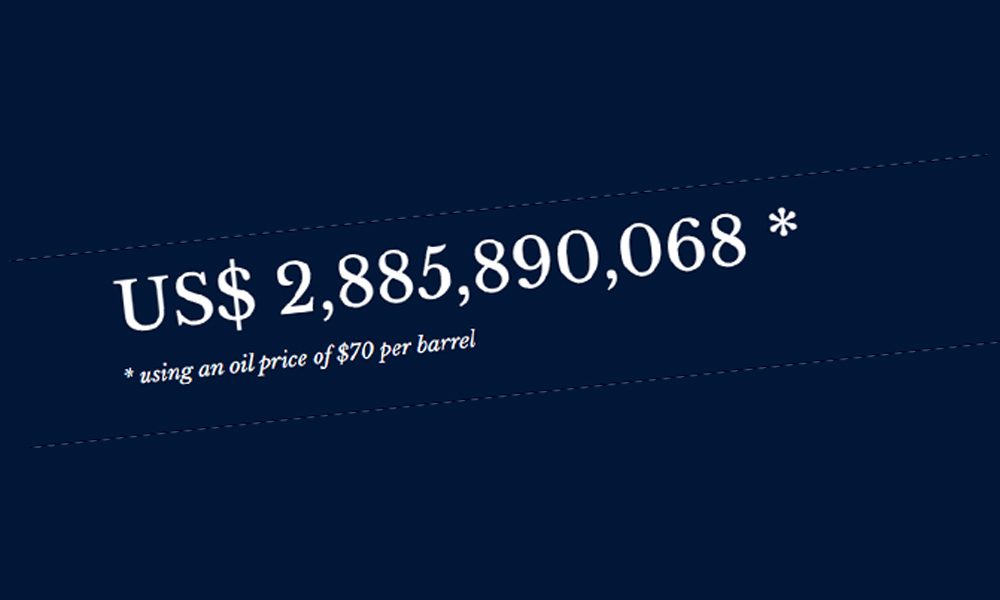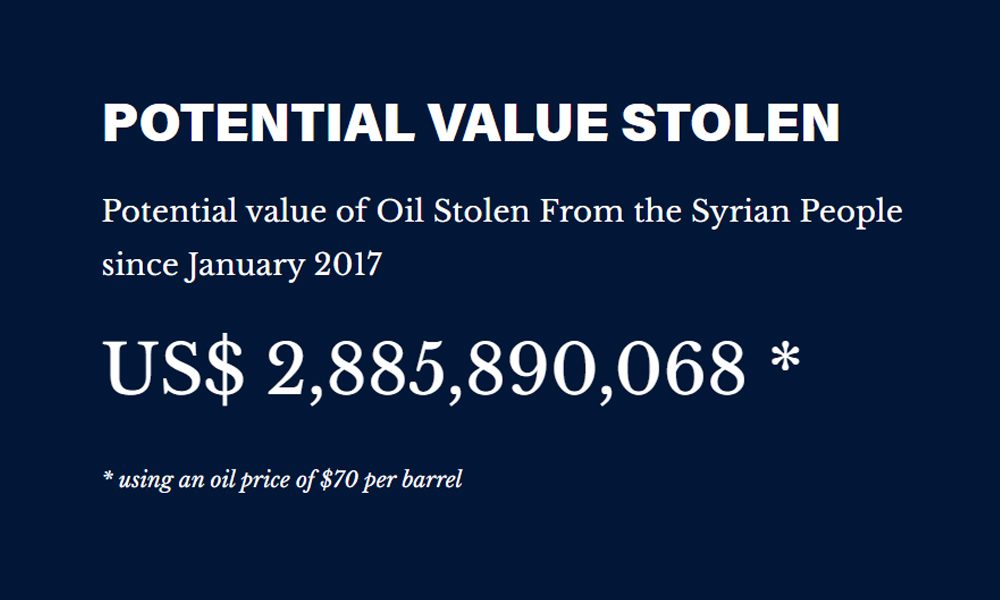
Illegal Oil Production in North-East Syria
- Home
- /
- Media Hub Posts
- /
- Illegal Oil Production in...
This weekend marked six years since Gulfsands was informed that its Block 26 fields in North-East Syria, under force majeure in order to comply with UK sanctions, had been returned to significant and regular production - illegally.
We now know that the perpetrators of this illicit production were, and continue to be, entities affiliated with the self-proclaimed Autonomous Administration of North and East Syria (the “AANES”), Peoples Defence Unit (“YPG”), Syrian Democratic Forces (“SDF”) and Syrian Democratic Council (“SDC”).
Since then, over 41 million barrels of oil have been stolen with a value of almost US$2.9 billion(*). These ongoing losses continue to be monitored and measured at www.gulfsands.com.

Gulfsands’ Block 26 assets have been illegally produced at a rate of around 20,000 barrels of oil per day during this period, but this is just a small portion of the total theft in the region. It is widely reported that production in North-East Syria is currently estimated to be four times this amount, at around 80,000 barrels of oil per day (worth around US$7 million per day at today’s prices).

The biggest travesty of all is that only a minimal amount of this value finds its way to benefit the Syrian people. OCHA reports that 14.6 million Syrians are in need of aid, 90% live below the poverty line and 80% are assessed to be food insecure. It is also estimated that there are more around 5.4 million people internally displaced within Syria and around 5.6 million Syrian refugees in neighbouring countries.
This illegal oil trade takes place on the black market, away from regulation and oversight, meaning prices are depressed and the potential for corruption is high. The majority of this oil therefore benefits illicit actors, not the Syrian people. This also leads to unsafe, unregulated, and hugely environmentally damaging oil field practices which also have a catastrophic effect on the health of local communities.
It is immensely frustrating and disappointing that several influential countries appear to turn a blind eye to this illicit production which contravenes international law, sovereignty, international sanctions and the principles of UNSCR 2254.
This is not just an issue in Syria, but illicit oil trade is a global issue – the United Nations University World Institute for Development Economics Research (WIDER) estimates illicit oil theft accounts for 5-7% of the global market for crude oil and petroleum fuel, valued at approximately US$133 billion each year. In some countries, including Syria, oil and gas is the main source of indigenous natural wealth. Illicit oil trade negatively impacts oil producing economies’ energy security, valuable income (for its people), inward and outward investment, security and stability, and damages both the local environment and global environment (due to oil being produced using poor health, safety, security and environmental standards).
Project Hope
Gulfsands is pioneering a Humanitarian and Economic Stimulus initiative which would pave the way for international energy companies (which have all declared force majeure as result of international sanctions) to return to operations in North-East Syria, with allocated revenues from oil sales deposited in an internationally administered fund and disbursed to finance early recovery, humanitarian and economic stimulus projects across the country – in line with UNSCR’s and for the benefit of all Syrian people who can, and should, benefit from their country’s national resource endowment to build self-sustainability and resilience for the future. We call this initiative Project Hope.
With investment and expertise, we estimate that production in North-East Syria could be increased from 80,000 boepd to around 500,000 boepd and generate around US$20 billion per annum. This could fund hundreds of medical and educational facilities and economic initiatives as well as create thousands of jobs. To put this into context, the US Government’s total funding available for the Syria humanitarian response in FY2021-22 was US$895 million (Source: USAID, “Complex Emergency Fact Sheet #7 FY22”- 6/10/2022), and the UK’s FCDO total funding in Syria during the crisis from Feb 2012 to March 2022 was £1.6 billion (Source: UKAid Syria Crisis response Summary – July 2022).
Gulfsands continues to work with partners in the international community to raise the profile of this issue and generate support for this important Project Hope initiative.
If you are interested to hear more follow Gulfsands on in Linkedin and the Company’s website at www.gulfsands.com.
Stay Up to Date
Connect with us on LinkedIn and Twitter



